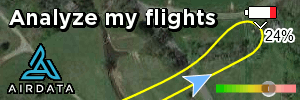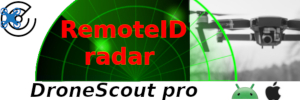We saw the videos of the Air 3S RTH by going into a parking garage and navigating back to the Home point.
Or the Air 3S flying into not only an apartment balcony but going inside the apartment to land.
OK, I don't know if those were real or some YouTuber stunts to get views.
But I am curious if people are regularly using RTH in which instead of dropping down vertically to Home point from the RTH height, they are having their Air 3S RTH to a Home point which is covered such as an apartment or hotel balcony or maybe a home garage or a covered carport.
One advantage would be if your Home point is in a balcony of a high rise building, say the 5th floor, then your AGL is effectively greater than 400 feet, because it would be 400 feet plus however high the 5th floor is.
Another would be that the building could be in a scenic location so you'd want to fly around there. Of course drone laws of that particular location permitting flights in that area.
I'm interested in at least trying it but I don't want the OA to go wonky and either refuse to RTH to the covered Home point or crashes into a roof or a ceiling. In one of the general setup videos I watched, the guy said be prepared to change or turn off OA for certain types of shots like flying say a 1/2 foot off the ground to track something -- sounds more like those Avata videos you see. But he said even in a relatively sparsely wooded area, OA might be too sensitive even to a couple of branches even though there's like 10-20 feet of space between them.
So who regularly uses RTH to Home point which do not have a clear airspace above them?
Are you launching from those unusual Home points so that Smart RTH or whatever they call this Lidar-assisted RTH can "learn" or retrace the path when it RTH?
Like that parking garage or apartment RTH videos, presumably they launched inside and flew outside of the buildings and then climbed and RTH more or less retraces those paths?
Or the Air 3S flying into not only an apartment balcony but going inside the apartment to land.
OK, I don't know if those were real or some YouTuber stunts to get views.
But I am curious if people are regularly using RTH in which instead of dropping down vertically to Home point from the RTH height, they are having their Air 3S RTH to a Home point which is covered such as an apartment or hotel balcony or maybe a home garage or a covered carport.
One advantage would be if your Home point is in a balcony of a high rise building, say the 5th floor, then your AGL is effectively greater than 400 feet, because it would be 400 feet plus however high the 5th floor is.
Another would be that the building could be in a scenic location so you'd want to fly around there. Of course drone laws of that particular location permitting flights in that area.
I'm interested in at least trying it but I don't want the OA to go wonky and either refuse to RTH to the covered Home point or crashes into a roof or a ceiling. In one of the general setup videos I watched, the guy said be prepared to change or turn off OA for certain types of shots like flying say a 1/2 foot off the ground to track something -- sounds more like those Avata videos you see. But he said even in a relatively sparsely wooded area, OA might be too sensitive even to a couple of branches even though there's like 10-20 feet of space between them.
So who regularly uses RTH to Home point which do not have a clear airspace above them?
Are you launching from those unusual Home points so that Smart RTH or whatever they call this Lidar-assisted RTH can "learn" or retrace the path when it RTH?
Like that parking garage or apartment RTH videos, presumably they launched inside and flew outside of the buildings and then climbed and RTH more or less retraces those paths?










